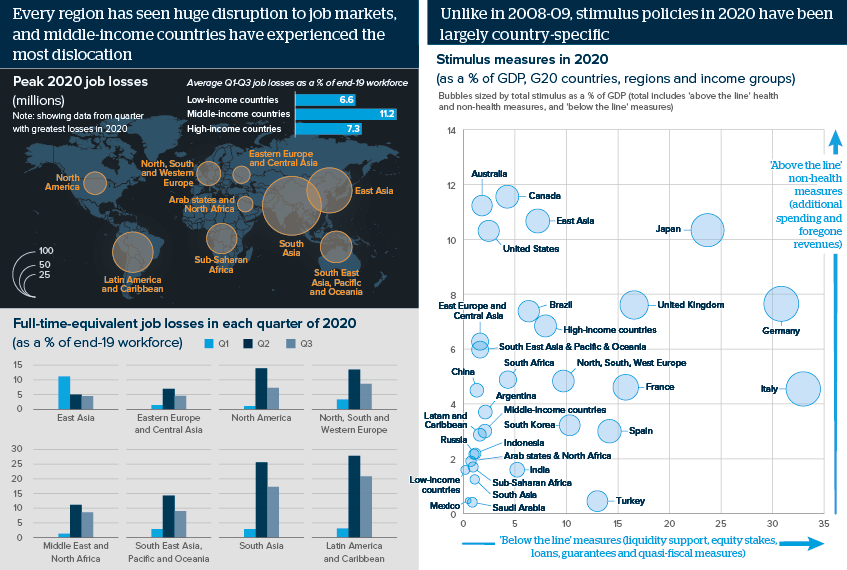Many middle-income states face a fragile recovery
The G20 summit pledged vaccine equity to help low-and-middle-income nations, but not broader economic commitments
Source: IMF Fiscal Monitor: Database of Country Fiscal Measures in Response to the COVID-19 Pandemic October 2020 data); International Labour Organisation (September 2020 data)
Outlook
The G20 has coordinated less on the stimulus measures in this crisis than in 2008-09. High-income countries have spent heavily to support workers and firms, while the 76 lowest-income countries (LICs) can access the Debt Suspension Service Initiative (DSSI) and the common framework on debt treatment, as well as borrowing from multilateral and regional development banks.
Middle-income countries (MICs) can borrow bilaterally and from development banks but cannot access the DSSI, or spend as lavishly as high-income nations. Consequently, the COVID-19 crisis will exacerbate the factors already trapping many MICs at middle income. More G20 cooperation, a softer US approach to multilateralism and widespread access to vaccination would improve the outlook.
Impacts
- The DSSI runs to mid-2021; calls will grow for it to include more nations and restructure rather than delay debts, but reform is unlikely.
- US resistance to a USD500bn round of IMF special drawing rights to relieve LMICs may soften, but gaining agreement will still be difficult.
- Despite G20 support, LMICs outside GAVI, the vaccine alliance, will be last to get vaccines; even LMICs in GAVI may not get full coverage.
- Major reform of the WTO or global tax system remains unlikely, but the new US administration will collaborate more, especially on climate.
See also
- Prospects for the global economy in 2021 - Dec 1, 2020
- Creditors will seek geopolitical gains in debt talks - Jul 13, 2020
- More developing countries will face debt distress - Jun 11, 2020
- More graphic analysis
